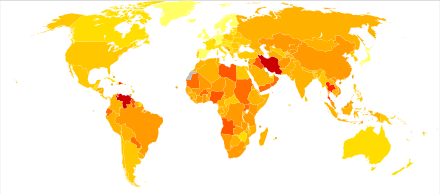Forensic statistics
| Part of a series on |
| Forensic science |
|---|
 |
|
Forensic statistics is the application of probability models and statistical techniques to scientific evidence, such as DNA evidence,[1] and the law. In contrast to "everyday" statistics, to not engender bias or unduly draw conclusions, forensic statisticians report likelihoods as likelihood ratios (LR). This ratio of probabilities is then used by juries or judges to draw inferences or conclusions and decide legal matters.[1]
Computer programs have been implemented with forensic DNA statistics for assessing the biological relationships between two or more people. Forensic science uses several approaches for DNA statistics with computer programs such as; match probability, exclusion probability, likelihood ratios, Bayesian approaches, and paternity and kinship testing.[2]
Although the precise origin of this term remains unclear, it is apparent that the term was used in the 1980s and 1990s.[3] Among the first forensic statistics conferences were two held in 1991 and 1993.[4]
Blood Stains
Blood stains are an important part of forensic statistics, as the analysis of blood drop collisions may help to picture the event that had previously gone on. Commonly blood stains are an elliptical shape, because of this blood stains are usually easy to determine the blood droplets angle through the formula “α = arcsin d/a”. In this formula 'a' and 'd' are simply estimations of the axis of the ellipse. From these calculations, a visualization of the event causing the stains is able to be drawn, and alongside further information such as the velocity of the entity that caused such stains.[5]
Bibliography
- Lucy, D. (2005.) Introduction to Statistics for Forensic Scientists, John Wiley and Sons.
References
- 1 2 Gill, Richard. "Forensic Statistics: Ready for Consumption?" (PDF). Mathematical Institute, Leiden University.
- ↑ Fung, Wing Kam (2006). "On Statistical Analysis Of Forensic DNA: Theory, Methods And Computer Programs". Forensic Science International. 162: 17–23. doi:10.1016/j.forsciint.2006.06.025.
- ↑ Valentin, J (1980). "Exclusions and attributions of paternity: practical experiences of forensic genetics and statistics". Am J Hum Genet. 32 (3): 420–31.
- ↑ Aitken C. G. G., Taroni F. (2004) Statistics and the Evaluation of Evidence for Forensic Scientists, John Wiley and Sons.
- ↑ Camana, Francesco (2013). "Determining The Area Of Convergence In Bloodstain Pattern Analysis: A Probabilistic Approach". Forensic Science International. 231: 131–136. arXiv:1210.6106. doi:10.1016/j.forsciint.2013.04.019.
External links